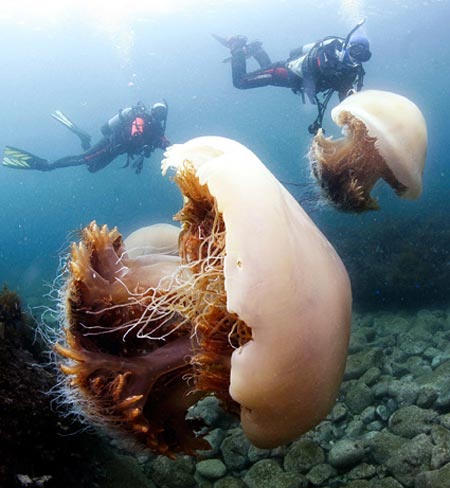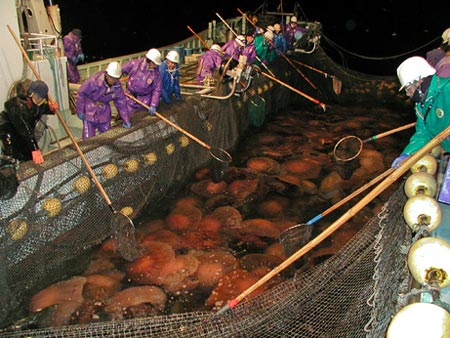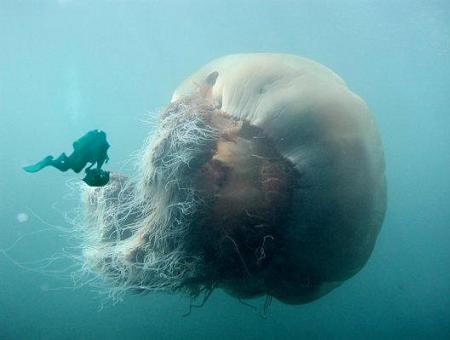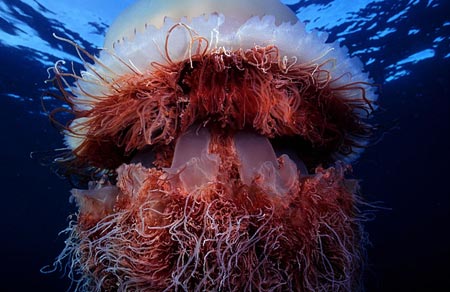Giant jellyfish came to Japan
Extremely large jellyfish that once swept into Japanese waters in 2005 will likely return this summer, experts predict.

In 2005 Japanese seas were disturbed by the arrival of Nomura jellyfish. The maximum diameter of this jellyfish can be up to 2m and the largest ones weigh up to 220 kg. (Photo: National Geographic).

Workers picked up Nomura's jellyfish in the sea near Iwate prefecture in December 2005. Only the loss of fishing nets that jellyfish destroy, Japanese fishermen have lost several billion yen. (Photo: National Geographic).

Nomura jellyfish mainly lives in the waters between China and Japan. In the early years of the 20th century, after about 40 years they often flooded Japanese waters once. But in the last few years they appear with more dense frequencies. (Photo: wordpress.com).

Determination of jellyfish on a Japanese ship. (Photo: blogiversity.org).

Scientists are still unclear why Nomura jelly only spilled into Japanese waters without invading other waters. (Photo: Nature).

Other animals will feel pain when touching the stinger of Nomura. However, they are not capable of killing people. In contact with them Japanese fishermen often wear protective clothing and glasses. (Photo: blogspot.com) .

Japanese coastal communities are trying to promote food from jellyfish. Experts affirmed that jellyfish collagen brings increased elasticity and slows down the aging process of the skin. (Photo: blogspot.com).

Professor Shin-ichi Uye of Hiroshima University led a delegation to make documentary films about Nomura jellyfish in November 2006. He said that the appearance of giant jellyfish is like storms, which means that humans cannot control, but can track their movements. (Photo: National Geographic).
- 'Heavy shock' with giant jellyfish on the seabed
- 65 interesting things about jellyfish (1)
- Giant jellyfish showed up after 70 years of disappearance
- Giant jellyfish shed fish vessels
- Jellyfish cannot 'invade' the planet
- The biotic house encounters the giant jellyfish in British waters
- The giant jellyfish washed over the English coast
- Giant jellyfish invade Korean beaches
- Giant jellyfish drifted off the coast of Australia
- Mysterious giant jellyfish re-exported after more than 100 years
- Jellyfish species can 'knock down' American carriers
- 65 interesting things about jellyfish (2)
 The 11 most unique public toilets in the world
The 11 most unique public toilets in the world Explore the ghost town in Namibia
Explore the ghost town in Namibia Rare historical moments are 'colored', giving us a clearer view of the past
Rare historical moments are 'colored', giving us a clearer view of the past The world famous ghost ship
The world famous ghost ship